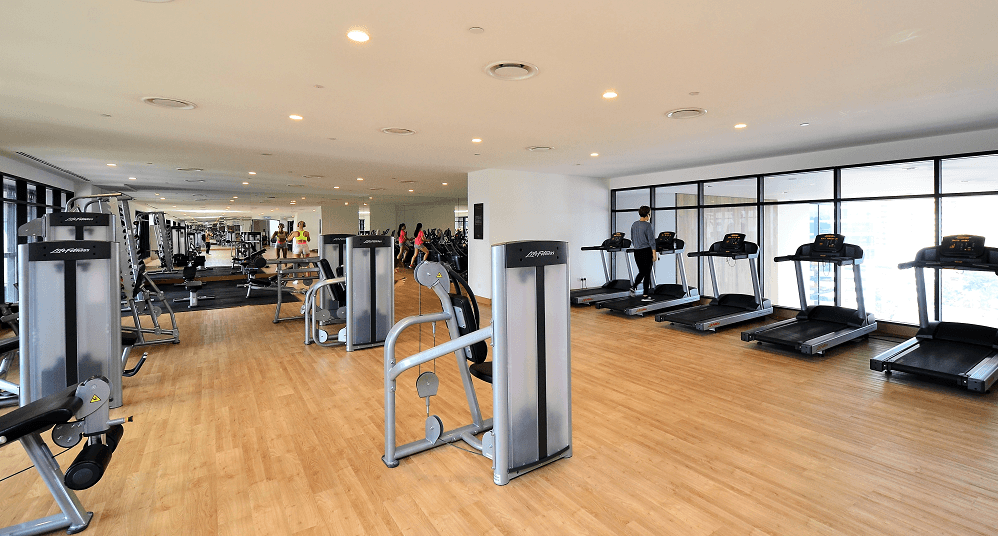Why Every Building Owner and Tenant Needs a Health and Wellness Strategy
Date Published:
August 20, 2019
Tenant satisfaction and employee retention help make a strong case for investing in a health and wellness strategy that aligns with energy efficiency and sustainability goals for commercial & retail properties.

A couple years ago I was a long-time resident of New York City. Like many commuters, I chose to ride my bike six miles from Brooklyn, bobbing and weaving through traffic into Manhattan five days a week. My intentions were partially to avoid the subway, but also to get some fresh air, take in the beautiful city view as I crossed the bridge, and get a good workout as part of my daily routine to help keep me healthy. Unfortunately, for many people, getting exercise on their way to work isn’t possible. Add on the fact that most of us spend the majority of the day inside of buildings, and it is even more critical that the indoor spaces where we work provide an efficient, healthy, and comfortable environment.
What makes a building healthy? Is it better daylight access and walkability? In part, yes. The National Institute of Building Sciences’ (NIBS) defines a high-performance building as one that addresses human, environmental, economic and total societal impact as a result of applying the highest level of design, construction, operation, and maintenance principles. These principles incorporate energy efficiency measures, thermal comfort, ventilation, and air quality to provide people with optimal working conditions, which have been shown to improve productivity, retention, and overall health.
As we see from NIBS’ principles, actions taken by landlords and tenant companies to improve occupant health and wellness should have a symbiotic relationship with energy efficiency of the building and tenant spaces to have the most positive impact. Inefficient buildings are bad at regulating temperatures, sluggish in providing fresher air to breathe, and generally uncomfortable and less healthy to work and live in.
Three Important Drivers of Health and Wellness in Buildings
1. Growing interest in health and wellness as an industry
Wellness is defined broadly as the pursuit of activities that promote physical and mental well-being. According to the Global Wellness Institute, the global wellness economy grew 12.8 % from a $3.7 trillion market to $4.2 trillion between 2015–2017, nearly twice as fast as global economic growth. For the betterment of society, it is encouraging that the industry is growing. Today, those who occupy buildings that are designed and operated with wellness in mind are able to benefit from amenities such as bike storage and access to a free gym and showers.

2. Certifications that provide guidelines for how to design and operate healthy buildings and spaces
As health and wellness bleeds into new business models and products every day, is it changing how all buildings are designed and operated? The answer is yes, it is starting to. In response to growing demand, the WELL Certification program was launched in 2014 as a framework to integrate health and wellness into the design of building and tenant spaces. In 2016, the Center for Disease Control and Prevention and the Center for Active Design launched Fitwel, an alternative to WELL with similar goals of encouraging future development by the public and private sector to enhance work environments in a way that would positively improve the well-being of the occupants. The Center for Active Design found that 49% of building owners are willing to pay more for buildings demonstrated to have a positive impact on health. And, the U.S. Chamber of Commerce reported that 87% of employers are focused on health in the office and 73% of these employers now offer wellness programs to staff members.
3. Using the lease as a tool to align sustainability goals with health and wellness
Conventional leases are unable to respond to market changes in leasing that has shifted towards fostering the adoption of sustainability and occupant health goals between landlords and tenants. IMT is working to change this by partnering with the U.S. Department of Energy’s (DOE) Better Buildings Alliance to spearhead the Green Lease Leaders recognition program. In addition to shining a spotlight on industry leaders, the recognition program offers guidelines and best practices in leasing that not only overcome split incentives but also drives innovation and adoption of win-win strategies. These strategies benefit both energy and health.
Green Lease Leader and longtime sustainability proponent TD Bank has integrated health and wellness into its energy management plan (EMP) and all aspects of building design and operations, using the lease as a tool to help achieve different goals as a tenant. For example, TD’s green lease provisions include a requirement of an ENERGY STAR rating of 75 or higher for corporate space and a maximum indoor and outdoor water consumption rate of 7 gallons per square foot for retail branches and stores. To complement these requirements, the bank seeks to collaborate with landlords to meet ASHRAE and WELL standards for enhanced outdoor air delivery, increased filtration, and promotion of healthy meals and fitness options.
The cost to retain good talent matters
In 2018, stok released a report that evaluates the benefits obtained by employers when occupying a high-performing building, providing a new way to evaluate a building’s components beyond first costs (construction). stok looked at the long-term financial benefits when the design incorporates how it will impact human performance, satisfaction, and wellness.

According to this report, companies leasing space in high-performing buildings that incorporate health and wellness into design and operations could increase annual profit by .45%.
As more findings like stok’s demonstrate the immense business benefits of healthy and high-performing buildings, it is important to remember that human health is paramount to every aspect of our lives in and out of work. While employers need to recognize health and wellness attributes help attract and retain top talent, building owners should consider how they help yield better rental premiums, achieve lower vacancy rates, and satisfy investors. This trend is promising and IMT will continue to work towards large-scale adoption by all building types, owners, and operators.
Categories:
Benefits, Cost Savings, Health and Wellness, Lease Negotiations, Tenant Fit-Out, Tenant Operations, Commercial Office, Landlord
